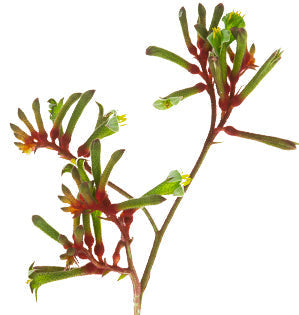
Kale-Decorative
Tall stalks with large deeply lobed frilly leaves and serrated edges, forming tight rosettes surrounded by larger, more spread-out leaves.
Welcome to our Flower Library. In these pages you will find over 134 of the most common florist flowers and foliages used in floral design. We have pictured and detailed the common and botanical names of each flower along with it's seasonal availability and colors. You may search for a flower by name or by image. For each flower we have detailed the care and conditioning methods, storage temperatures, design notes and problems specific to each flower. Also included in these pages are interesting facts about each flower including the country or region of origin, how the flower came to named, and historical notes about the flower.
.jpg?v=0)
Enter your keyword search above, or browse the library below.
There were no search results for the search "". Please try using more general terms to get more results.
Results found for ""
Result pages:

Tall stalks with large deeply lobed frilly leaves and serrated edges, forming tight rosettes surrounded by larger, more spread-out leaves.

Unusual fuzzy, tubular and slightly curved flowers (shaped like little kangaroo paws) borne in one-sided elongated clusters. Blossoms are felted with a fur-like covering.

Oblong or lance-shaped leaves, with rounded tips and scalloped edges covered in fine, silken hairs, giving them a soft, velvety texture.


Stunning purple flowers, which grow in tight clusters on tall, slender stems, 1 to 3 feet in length. These flowers are composed of multiple tiny blossoms arranged in spikes. Lavender has narrow, silvery-green leaves that are about 2 to 3 inches long.

Leatherleaf fronds are long, lance-shaped, and have a leathery texture, hence the name "Leatherleaf." The fronds can grow up to 3 feet in length. Each frond consists of numerous leaflets arranged alternately along its length. These leaflets are usually broad at the base and taper to a point at the tip, giving the fronds a feather-like appearance.

Clusters of small, double blossoms on woody stems with short, soft, needlelike, leaves.

Flower heads consists of woody, leaflike bracts surrounding a small cone or very small flower. Stems are long and densely packed with stiff leaves that radiate out from the stem.

Long, straight stems topped with a single straight spike clustered with tiny florets. Liatris is an unusual blossom in that the florets open at the top of the spike first, then open downward.

Highly fragrant, thickly massed clusters of florets 6 to 10 inches long at the end of woody stems.

Flowers appear on short branches at the end of the stem. Oriental: cup-shaped flowers with elongated petals, 4 to 8 inches across, 3 to 6 flowers on stems 24 to 36 inches long. Asiatic: cup-shaped flowers, 4 to 6 inches across, clusters of 5 to 8 flowers on stems 24 to 36 inches long. Easter: fragrant, long trumpet-shaped blossoms growing sideways from the single vertical stem, 1 to 6 blossoms per stem.

Long, narrow leaves, 8 to 18 inches in length and less than an inch wide that resemble blades of grass. The leaves have a smooth texture and a slightly leathery feel. They are flexible and bend easily, giving the foliage a graceful and flowing appearance.


Delicate cup shaped, multi-petaled blossoms opening into a rose-like bloom. Five or more blooms to the stem.

Lotus pods have a distinctive appearance, characterized by a cluster of small holes or chambers arranged in a circular or oval pattern.

The flowers of Magnolia are notably large, often reaching up to 12 inches in diameter. They have a distinctive cup-shaped or saucer-shaped form with broad, waxy petals. The leaves are large and leathery, typically ranging from 5 to 10 inches in length. They are oblong-elliptic or ovate in shape, with smooth edges and a pointed tip.

A delicate and graceful fern known for its distinctive, fan-shaped fronds and fine, lacy foliage.

Manzanita are coveted for their twisted, gnarled branches. The bark is smooth, and reddish-brown. The leaves are small, leathery, and elliptical or lanceolate in shape, with smooth edges.

There are over 50 different species of Marigolds. The blossoms can vary in size, from small, delicate flowers to larger, pom-pom-like blooms. The flower’s petals are often ruffled or layered, giving it a textured, full appearance.

The foliage typically consists of opposite, toothed leaves that are arranged in pairs along square-shaped stems, which are often hairy.